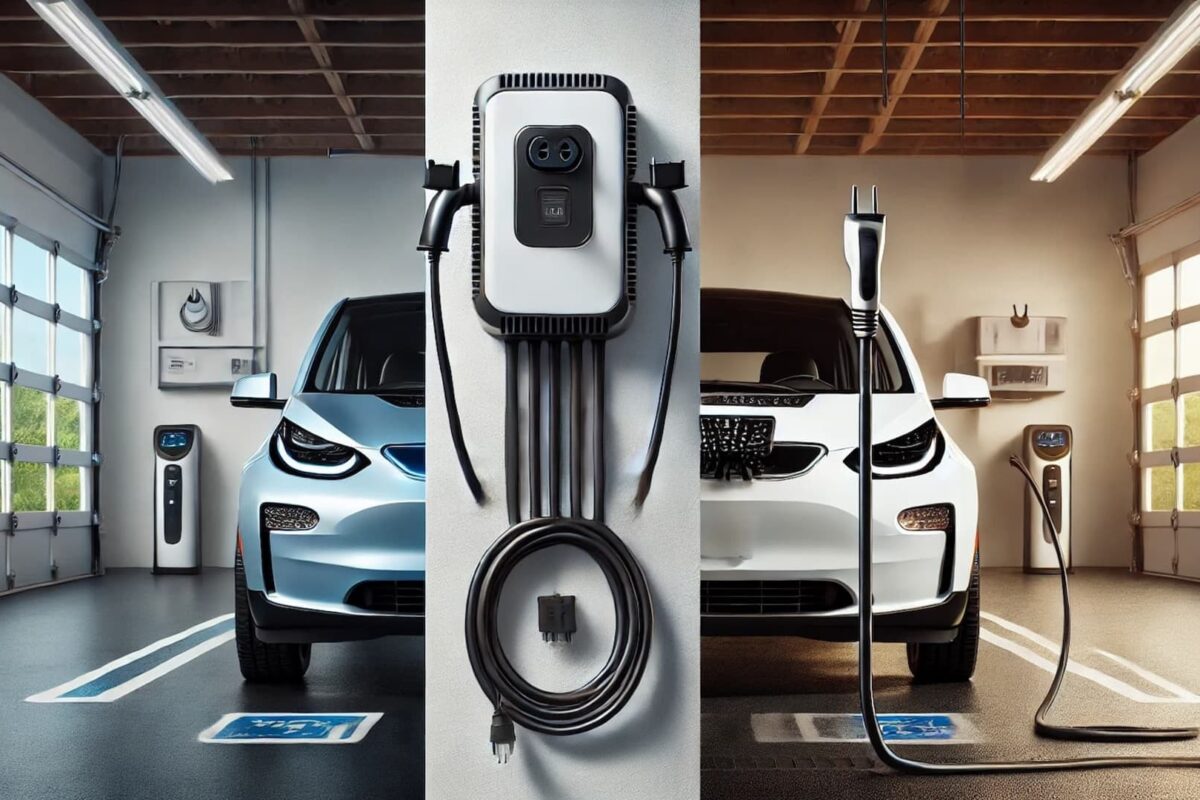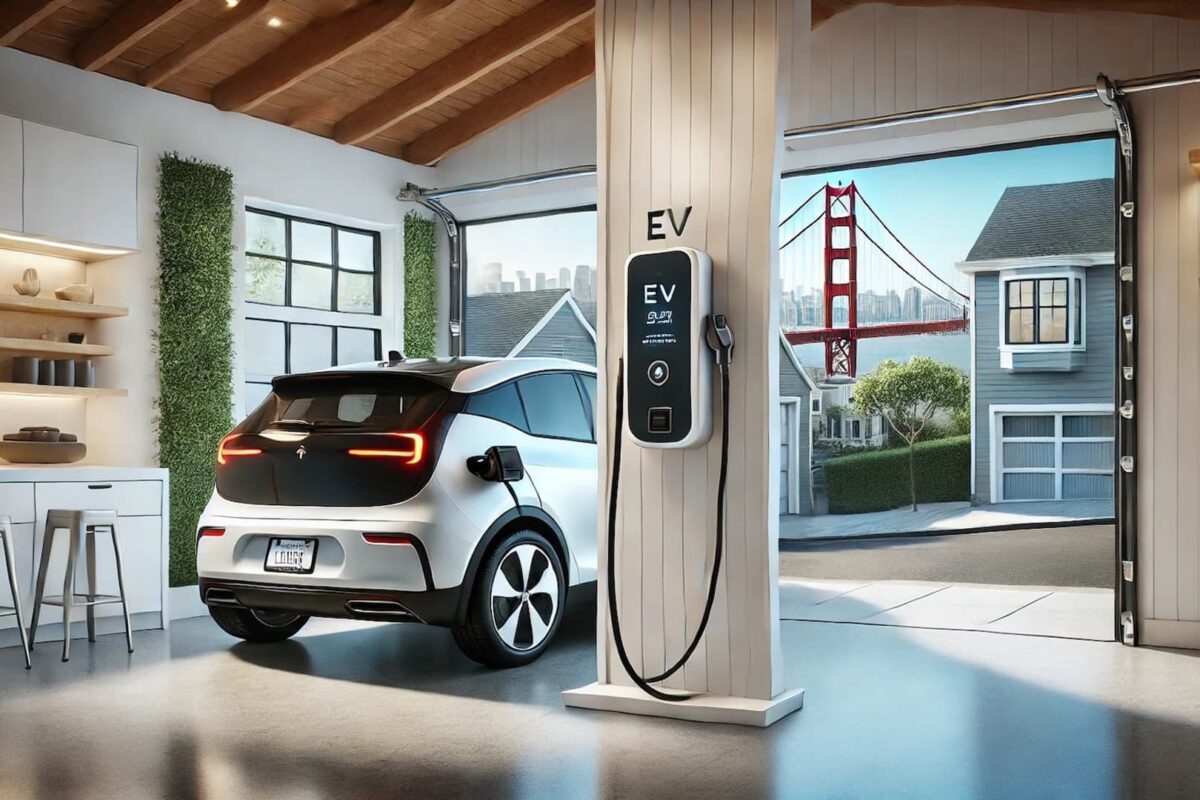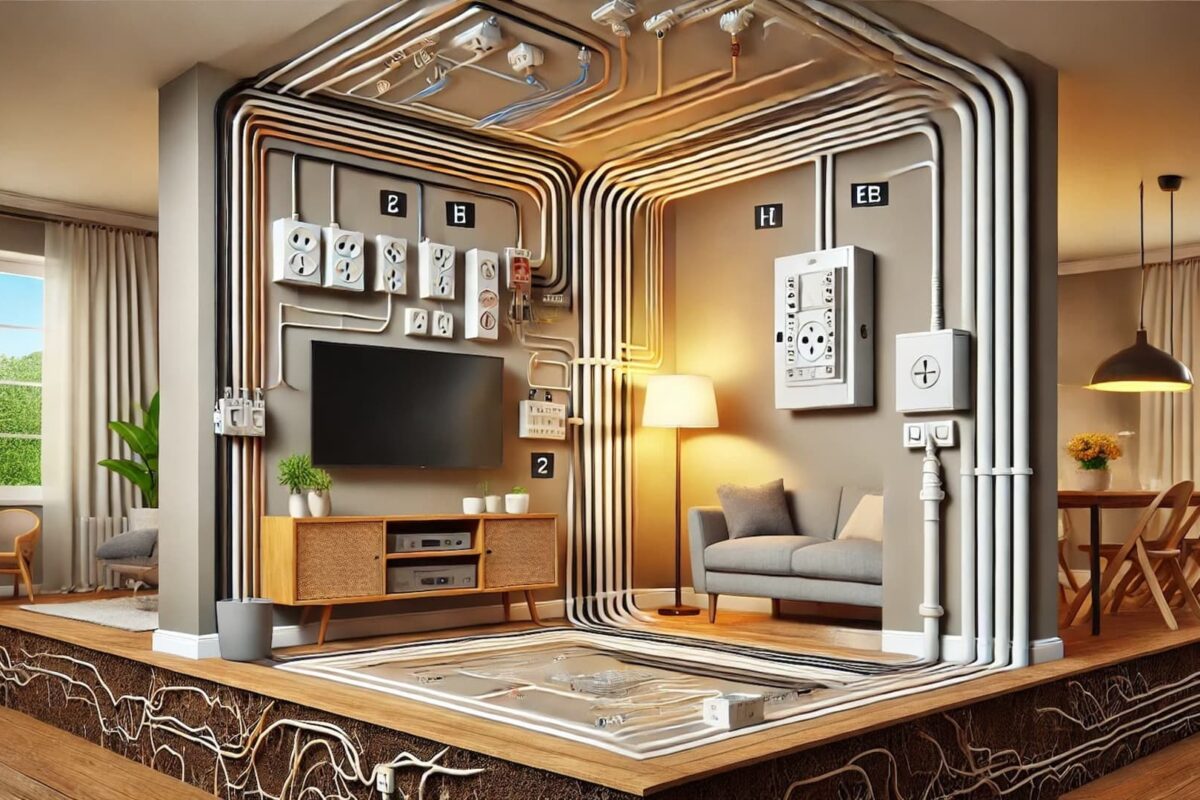As the number of electric vehicles (EVs) on the road continues to rise, more San Francisco homes are looking for quick and cheap ways to charge their cars at home. Having an EV charger at home is convenient because you can charge your car while it’s parked, so you don’t have to use public charging sites. With California’s push towards renewable energy and a greener future, home charging is becoming not only a convenience but a necessity.
Getting a home EV charger has many benefits, such as letting you charge your car during off-peak hours, when electricity rates are cheaper, so you can always have a full battery for your daily commutes. Putting in a home charger can also make your home more valuable, which can help you sell it in a place like San Francisco that makes EVs welcome.
However, choosing the right charger can be overwhelming, given the variety of models on the market. Different models have various smart features, power levels, and features. MaxElectric put together this complete guide with a list of some of the best EV chargers on the market right now. Your home and car will both be better off after reading this.
1. Tesla Universal Wall Connector
Tesla’s Universal Wall Connector is designed not only for Tesla vehicles but also for other EVs, thanks to its built-in adapter. It’s a great option for those who plan to switch cars later on or for residences with several EV brands.
Key Features:
Specifically designed for Tesla vehicles, though with an adapter, it can charge other EVs. Offers up to 44 miles of range per hour of charge with 48-amp output. Wi-Fi-enabled for software updates and control.
Compatibility: Tesla (compatible with other brands with an adapter)
Price: Moderate to high.
Output Capability: 48/40/32/24/16/12 amps (up to 11.5 kW)
Cord Length: 24 feet
Outdoor Rating: NEMA 3R
Wi-Fi Connectivity: Integrated with Tesla’s mobile app
Pros:
- Versatile Compatibility: The built-in adapter allows seamless switching between Tesla’s proprietary plug (NACS) and the J1772 standard used by most other EVs.
- Locking Mechanism: The adapter features an electronic lock, preventing it from being removed or lost.
- Tesla App Integration: For Tesla owners, the charger integrates directly with the vehicle’s app for real-time energy use tracking and charging control.
Cons:
- Limited Features for Non-Tesla Vehicles: It works with EVs that aren’t Teslas, but it doesn’t have the advanced data tracking features that Tesla cars do, like tracking costs and monitoring efficiency.
- Price: At around $580, it’s pricier than many other models, especially if you don’t own a Tesla.
Summary:
The Tesla Universal Wall Connector is a premium option for households with multiple EV types or those looking to future-proof their setup. Because it costs a lot and doesn’t have many features that other cars don’t have, it may be too much for some people who don’t drive Teslas.
2. JuiceBox 40 Smart EV Charging Station
The JuiceBox 40 is a robust, smart EV charger with Wi-Fi connectivity and various output options. It’s a highly feature-rich charger, but it comes at a higher cost compared to other models.
Key Features:
A powerful, Wi-Fi-enabled charger with smart charging features, offering up to 40 amps of charging power. It has an app for monitoring and scheduling charging, plus voice control with Amazon Alexa.
Compatibility: All EVs.
Price: Moderate.
- Output Capability: 40/32/24/16/12/6 amps (up to 9.6 kW)
- Cord Length: 25 feet
- Outdoor Rating: NEMA 4X (IP66 – highest protection against dust and water)
- Wi-Fi Connectivity: Yes, but the app experience is not as polished as ChargePoint
Pros:
- Multiple Output Options: Available in different output levels to match your home’s electrical capacity.
- Durable Build: The NEMA 4X rating makes it extremely weather-resistant, making it suitable for harsh outdoor conditions.
- Energy Tracking: Tracks energy output and charge time, with smart notifications and scheduling options.
Cons:
- Price: At approximately $649, it’s one of the more expensive options on the market.
- App Issues: Users have reported that the app logs them out frequently, and it lacks detailed cost tracking found in cheaper models.
Summary:
The JuiceBox 40 is ideal for those who need a durable, feature-rich charger that can handle various environmental conditions. However, its higher price and less intuitive app may deter some users looking for a smoother experience.
3. ChargePoint Home Flex EV Charger
One of the most popular EV chargers on the market right now is the ChargePoint Home Flex, which is known for its strong app connection and wide range of features. It is a Level 2 charger that lets you change the current, so it can work with a number of home electrical systems.
Key Features:
Adjustable amperage from 16 to 50 amps for flexibility. Wi-Fi-enabled, allowing users to schedule charging, monitor charging sessions, and integrate with smart home systems like Alexa.
Compatibility: All EVs.
Price: Moderate to high.
- Output Capability: 50/48/40/32/24/16 amps (up to 12 kW)
- Cord Length: 23 feet
- Outdoor Rating: NEMA 3R (suitable for outdoor use)
- Wi-Fi Connectivity: Full app integration with smart scheduling and cost tracking
Pros:
- Smart App: Users can keep a close eye on their car’s performance right down to the penny with ChargePoint’s app, which keeps thorough records of charging times, energy use, and costs.
- Customizable Power Levels: Choose from a wide range of output settings based on your home’s electrical capacity, ensuring optimal charging without the need for expensive upgrades.
- Public Charging Integration: The same app that controls your home charger can be used at public ChargePoint stations, providing a seamless user experience.
Cons:
- Price: At approximately $550, it’s one of the more expensive options on the market.
- Outdoor Rating: While it is rated for outdoor use, its NEMA 3R rating means it’s less robust for extreme weather conditions compared to some competitors.
- Installation: Lower output settings may require a hardwired connection, which can increase installation costs.
Summary:
Homeowners who want to be able to change their mind, have smart features, and keep accurate records of their expenses will love the ChargePoint Home Flex. Those with a range of EVs or changing future needs are especially well-suited to it.
4. Grizzl-E Classic EV Charger
Its reputation for being tough and simple makes the Grizzl-E Classic one of the best choices for homes that need a long-lasting outdoor charger. It doesn’t have as many smart features as other models, but it’s very stable because it’s built well.
Key Features:
A durable, weather-resistant Level 2 charger with up to 40 amps of power. Known for its simplicity and rugged build, it doesn’t have Wi-Fi, but it is highly reliable for basic charging needs.
Compatibility: All EVs.Compatibility: All EVs.
Price: Affordable to moderate.
- Output Capability: 40/32/24/16 amps (up to 9.6 kW)
- Cord Length: 24 feet
- Outdoor Rating: NEMA 4X (IP67 – extreme weather protection)
- Wi-Fi Connectivity: None
Pros:
- Extreme Durability: The Grizzl-E’s tough aluminum casing can withstand harsh weather and heavy impacts, making it perfect for outdoor installations.
- Simple Operation: No complicated setup or app management required—just plug in and charge.
- Affordable: Despite its rugged build, it’s priced around $400, making it an economical choice for those who don’t need smart features.
Cons:
- Lack of Smart Features: No Wi-Fi connectivity or app integration means you won’t be able to track energy usage or control charging remotely.
- Manual Settings: Adjusting output levels requires physical toggling of switches inside the unit, rather than through an app.
Summary:
If you need a durable, weather-resistant charger that will stand up to the elements, the Grizzl-E Classic is a great option. People who value reliability over smart features will love its simple design and low price.
5. Emporia EV Charger
For those seeking an affordable yet capable home charging solution, the Emporia EV Charger delivers high-end performance at a fraction of the cost of other models. The power and features of this charger are very good, especially considering how cheap it is. The price is very fair.
Key Features:
48-amp smart charger with Wi-Fi capabilities for scheduling and monitoring. It integrates with the Emporia Energy app, which also tracks home energy usage. Offers a good balance of performance and features.
Compatibility: All EVs.
Price: Affordable to moderate.
- Output Capability: 48 to 6 amps (up to 11.5 kW)
- Cord Length: 24 feet
- Outdoor Rating: NEMA 4 (more robust weather protection than ChargePoint)
- Wi-Fi Connectivity: Included, though the app is less intuitive than others
Pros:
- Cost-Effective: Priced at around $399, it’s one of the cheapest smart chargers available without sacrificing power or essential features.
- High Output: With a peak output of 11.5 kW, it’s on par with much more expensive models.
- Load Management: Emporia’s load management system monitors your home’s overall energy use, ensuring that the charger never overloads the electrical system.
Cons:
- Complex App: While the app includes electricity tracking, it’s cluttered and not as user-friendly as ChargePoint’s app.
- Limited Vehicle Integration: The app doesn’t let you track charging for specific car types like some models do, which limits how it can be customized.
Summary:
The Emporia EV Charger is perfect for those on a budget who still want high performance. Though its software may not be as well-designed, the device itself offers outstanding value for a range of EV owners, especially those in need of a durable outdoor solution.
These chargers are popular for their mix of power, features, and ease of installation, making them great choices for home EV charging setups.
Additional Considerations When Choosing an EV Charger
When selecting an EV charger for your home, there are several factors to consider beyond just the brand or price. Here are a few other key points to keep in mind:
- Home Electrical Capacity: Before installing a charger, ensure that your home’s electrical system can handle the additional load. Many Level 2 chargers require a dedicated 240-volt outlet, and in some cases, an electrical panel upgrade may be necessary.
- Installation Costs: Depending on your home’s electrical setup, the cost to install a charger can range from a few hundred to a few thousand dollars. It’s crucial to consult with a certified electrician, like those at MaxElectric, to get an accurate estimate.
- Tax Incentives: Many states, including California, offer tax credits and rebates for EV charger installations. Make sure you look into the benefits that are out there to lower your initial costs.
- Outdoor vs. Indoor Installation: If you plan to install your charger outdoors, make sure it’s rated for outdoor use. Look for models with NEMA 4 or higher ratings for protection against rain, dust, and other elements.
Conclusion: Choosing the Right EV Charger for Your Home
Getting a home EV charger has never been more important as the number of electric cars on the road grows. The ability to charge at home is a great option for San Francisco residents. It’s convenient, and they might even save money on electricity costs.
Our main goal at MaxElectric is to help homeowners find the best EV charger choice for their specific needs. Whether you’re looking for a budget-friendly option like the Emporia EV Charger, a future-proof solution like the Tesla Universal Wall Connector, or a durable outdoor charger like the Grizzl-E Classic, our team is here to assist you every step of the way.
Choosing the right charger depends on your vehicle, your home’s electrical setup, and your personal preferences. MaxElectric will make sure that your home charging system works safely and well for years to come, no matter what you choose. They offer professional installation and help after the sale.
Contact MaxElectric today for a consultation and take the next step towards sustainable, efficient EV charging at home.




